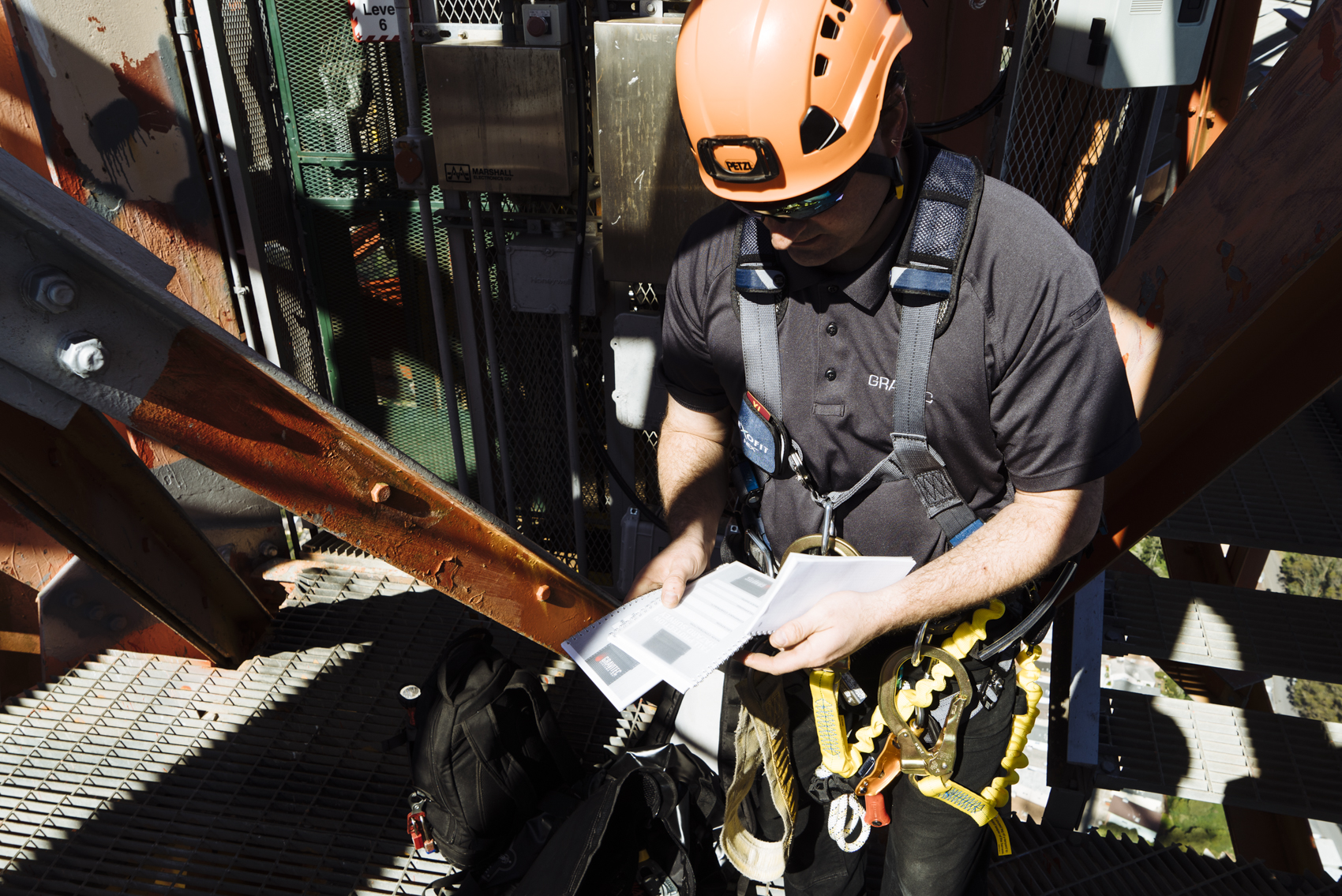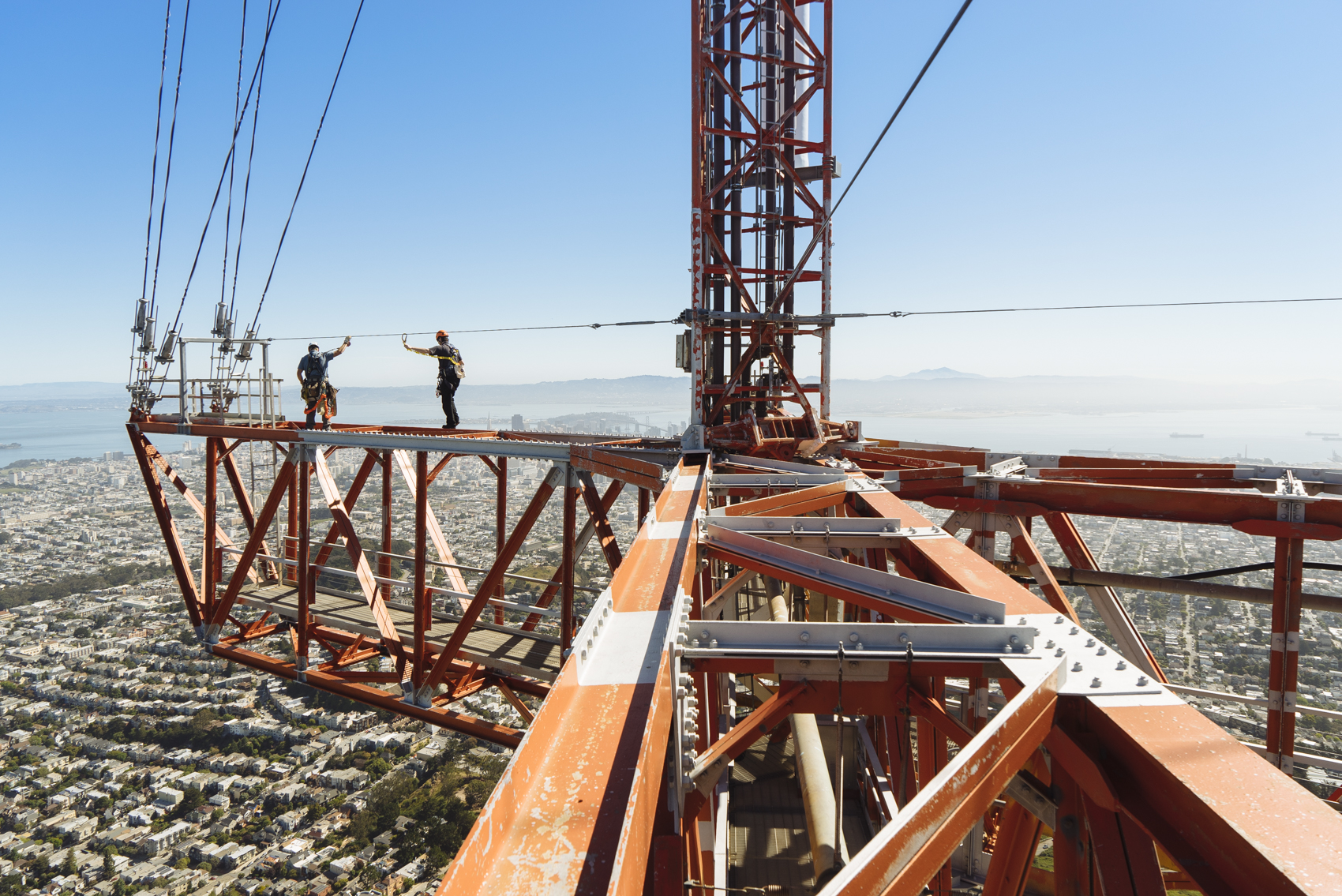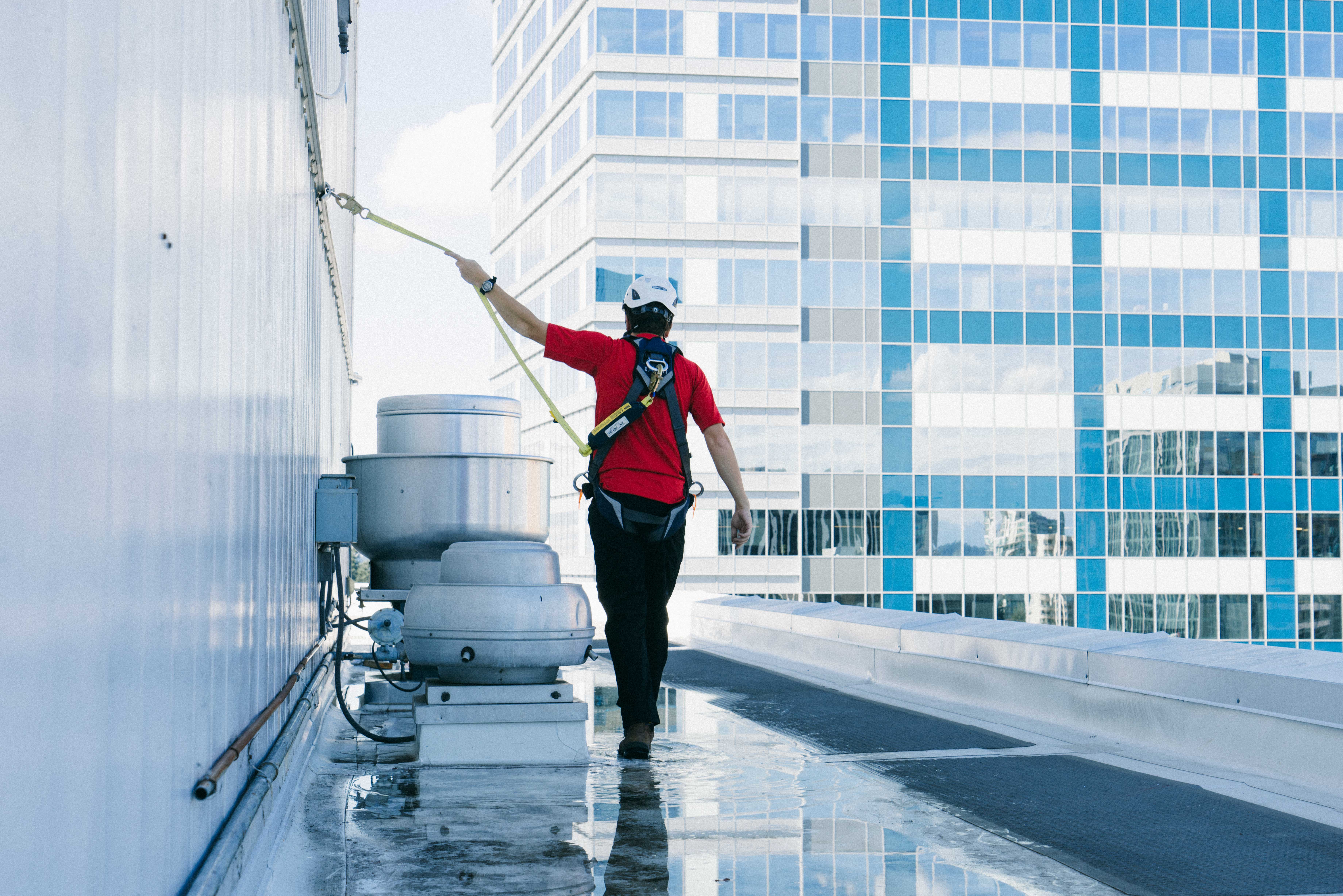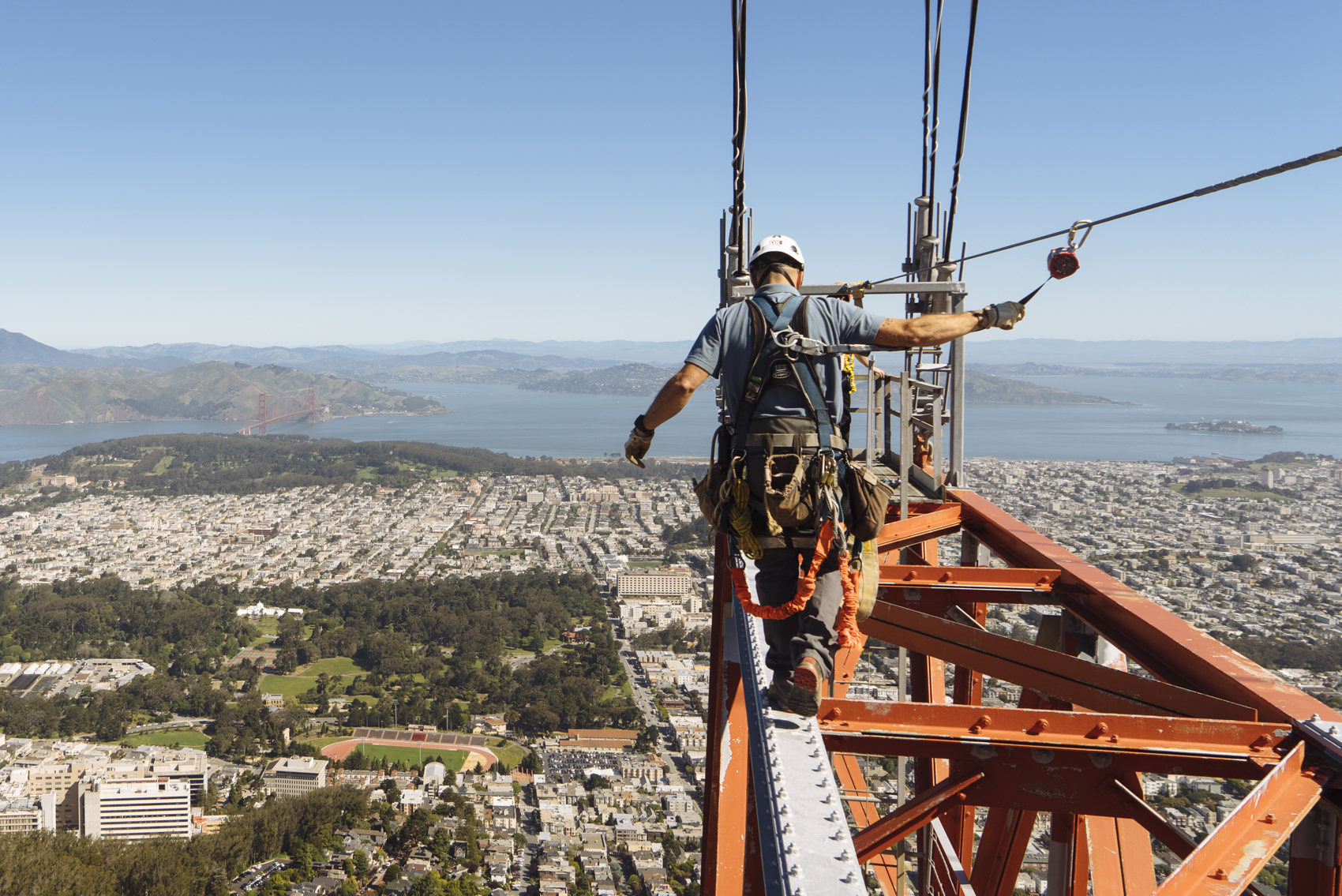Specifications by Gravitec
Existing fall protection specifications consistently contain outdated standards, conflicting standards and/or vague information. By the time these issues are identified, the project is out to bid and it is often too late to correct. As a result of these repeated issues, Gravitec spent a year developing current best practice construction specifications for the majority of generic and manufactured horizontal lifelines, rigid rails and anchor posts. These specifications are available here on our site.
When you have determined which system is best for your application, you can download the specifications and edit them to meet your needs.
How to Use Our Specifications
Step 1: Download and open the specification ( bottom of page).
Step 2: Within the open specification, click on the Pilcrow button (the paragraph symbol). Doing this allows you to read the hidden notes. The notes have been included into these documents to aid the writer in altering the specifications to their requirements.
Step 3: Move to section 1.1 System Description. This section is an abstract for the project. It neatly describes the major components of the specified system to help quoters quickly and accurately develop a quote. Read the hidden notes within this section. Alter the non-hidden section accordingly, deleting the grey wording as you go.
Step 4: Move to section 1.5 Design point A.4. This section discusses how the worker will be protected. Choose either Fall Arrest or Fall Restraint. If you choose Fall Arrest, delete the Fall Restraint section. If you choose Fall Restraint leave the Fall Arrest section, as it is referenced and adjusts the numbering
to 5.
Step 5: Move to section 2.3 Materials point B. This section discusses the supporting structure of the fall protection system. If the system will be attached directly to the existing or new structure, (without further structure needed) delete this section. However, if there needs to be additional structure, call out the necessary structure. If you are unsure of what is needed, please contact Gravitec Systems for assistance.
This brief tutorial should aid you in writing this specification. If you would like further assistance from a member of our engineering department, please contact us at 800.755.8455.
Specifications Writing
Gravitec’s specifications were written to clearly communicate the requirements of the fall protection system or components to a contractor. The level of clarity necessary for these specifications requires careful tailoring — removing unnecessary material and adding basic requirements. Most architects can complete this editing on their own, however we are happy to provide any assistance. Furthermore, if the architect simply does not have the time to do the editing themselves, one of our capable engineers will write the specification for a nominal fee.


Rigid Rail Specifications
An option to traditional horizontal lifelines, rigid rails are permanent continuous fall protection anchors that protect workers over a large area. In their most basic form, a rigid rail is an I-beam with a trolley connected to the bottom flange. More complicated systems involve slotted extensions with a trolley that runs down the slot. They can be part of the traveling bridge system that allows workers three planes of movement (left/right, front/back and up/down). Swing arm systems allow the rail to be stored out of the way, along the wall. Rigid rail systems can be comparable cost wise to horizontal lifelines (cable systems), but this should be analyzed before a final design is made.
The development of rigid rails began as an alternative to HLLs. Though they accomplish the same tasks, rigid rails have two distinct advantages:
- Rigid rails do not sag and therefore require less clearance then a HLL
- HLLs can deliver much higher forces to their structural connections
These advantages do not eliminate the need for HLLs, because rigid rails have their own restrictions:
- Rigid rails are much heavier than the HLLs
- Rigid rails typically have smaller maximum clear spans
RIGID RAIL SPECIFICATION DOCUMENTS

Horizontal Lifeline Specifications
Permanent Horizontal Lifelines (HLL) are continuous fall protection systems that protect workers over a large area. In their most basic form, an HLL is a wire rope connected at each end to a single point anchor. Their simplicity is deceiving, because their design can be complex.
HLLs have two critical design requirements:
Managing the end anchor loads: When the HLL is fixed to two single point anchors, and a force is applied to the wire rope, the load on the line and anchors can multiply by as much as 15:1.
Managing the clearance:Some factors that should be considered in managing clearance include the natural sag of a wire rope, its stretch with increased tension, the elongation of a worker’s connecting means and the stretch of a harness. These considerations, among others, can cause HLLs to require large clearances.
Because of these design requirements, OSHA requires the designer to have intimate knowledge of fall protection and ANSI Z359.6, “Specifications and Design Requirements for Active Fall Protection Systems”.
HORIZONTAL LIFELINE SPECIFICATION DOCUMENTS


Fall Arrest Anchor Specifications
“Anchorages used for attachment of personal fall arrest equipment shall be… capable of supporting at least 5,000 pounds (22.2 kN) per employee attached, or shall be designed… [to] have sufficient strength to withstand twice the potential impact energy of an employee free falling a distance of 6 feet (1.8 m), or the free fall distance permitted by the system, whichever is less.” – OSHA 1926.502(d)Permanent anchors in their most basic form are a metal D-ring attached to permanent structure. However, the shape, size and function of fall protection anchors are diverse.
The specifications that Gravitec has provided are variations on the basic form of a fall protection anchor.
These variations include:
- Tip-over post:An energy absorbing anchor point that reduces load on the permanent structure.
- System-specific anchor:An anchor that can only be used with an explicit fall protection system (the system required is the horizontal lifeline of the same name).
- Single point anchor: A basic anchor post that only allows one connection at a time. This anchor style may also feature tip-over capabilities.
- Within the variations, each individual anchor has its own nuances.

